Saltwater Inflow, winter 2003
Jan Piechura, Agnieszka
Beszczynska-Möller
Institute of Oceanology PAS, Sopot,
Poland
e-mail: piechura@iopan.gda.pl
Water exchange through the Danish Straits is the crucial process for the Baltic Sea hydrography, environment and ecosystem. Special role is played here by rapid, large inflows bringing hundreds of cubic kilometers of salty, well oxygenated water into the Baltic Sea in a time scale of days. The occurrence of such events depends mainly on atmospheric circulation and requires proper sequence of wind forcing and sea level changes.
In the 20th century, until the 1980s inflows were observed every 4-5 years on average. But during the last 20 years significant inflows occurred only 3 times: 1983, 1993 and the winter 2003.
The latest event started in January 2003: Darss Sill platform recorded an inflow between Jan. 16th and 25th, and Drogden Sill data show inflow started Jan 11th. Presence of inflow waters in the Arkona and Bornholm Basins was recorded already at the end of January by r/v Oceania (21-23 Jan.) and r/v Prof. A. Penk (24-26 Jan.). Next it was recognized, besides Arkona and Bornholm Basin, also in Słupsk Channel in February by r/v Oceania (4-6.02; and 12-17.02), r/v Gauss (8-20.02) and March r/v Oceania (16-17.03). In March, data collected by r/v Aranda (19-20.03) and r/v Gauss (21-31.03) show presence of inflow waters in the Gotland Deep as well. Mixing and transport of inflow waters in deep regions of the Baltic Sea were farther observed in April by r/v Oceania (22-24.04), in May by r/v A.v. Humboldt (10-12.05) and r/v Professor Stokman (25-29.05). Research on inflow was completed by sailing catamaran “Centaurus” in June (17-19.06) and July (2-5.07), r/v Professor Stokman in July (15-19.07) and r/v Oceania in August (16-17.08).
All together 15 research cruises were made by 7 different research vessels from 4 different Baltic countries. Never before such broad action by so many ships was performed, the more so that it was spontaneous, not organized.
The most important results of these research were presented at the 3 rd Baltic Sea Science Congress 2003 (Helsinki August 2003) and are published in Oceanologia volume, 45(4)/2003.
Since the previous very strong inflow in 1993 only weak inflows in 1993/84 and 1997 were observed. Description of the hydrographic – hydrochemical development in the eastern Gotland Basin during that period, is given in the paper by Guenther Nausch et al.
Processes during summer – autumn 2002, the August’s warm water inflow in particular, thus directly preceding the 2003 event, have had big influence on the winter inflow itself and its dynamics. The evolution of this summer inflow is described and possible causes discussed in the next paper by Rainer Feistal et al.
Piechura and Beszczyńska-Möller gave description, based on high – resolution CTD and ADCP data, of transport and mixing of inflow waters in the deep regions of the Baltic See.
Finally the renewal of the Baltic Sea deep waters, their oxygenation, cooling and salinisation is described in paper by Rainer Feistel et al.
To fully explore the possibility
given by such rich collection of data, special Workshop convened by
J. Piechura was organized during the BSSC 2003. All together 7 papers
were presented, followed by very fruitful discussion.
Practical/organizational measures, how to deal with events in the
future were also discussed.
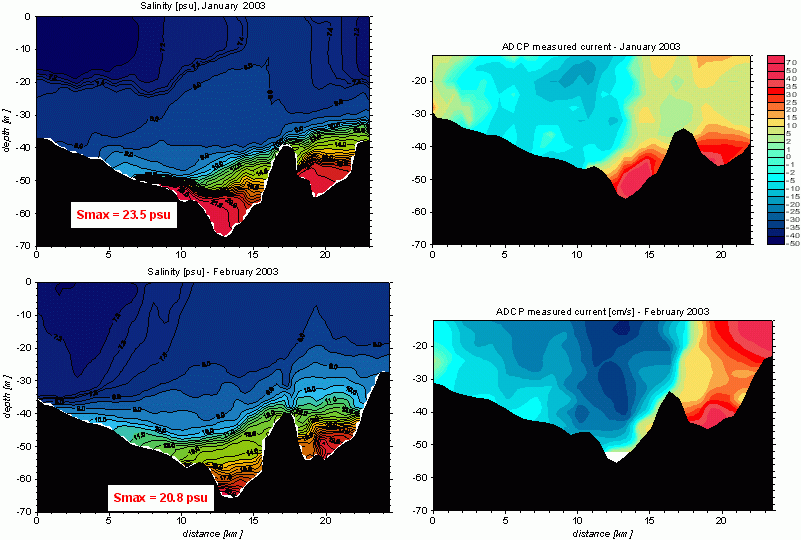
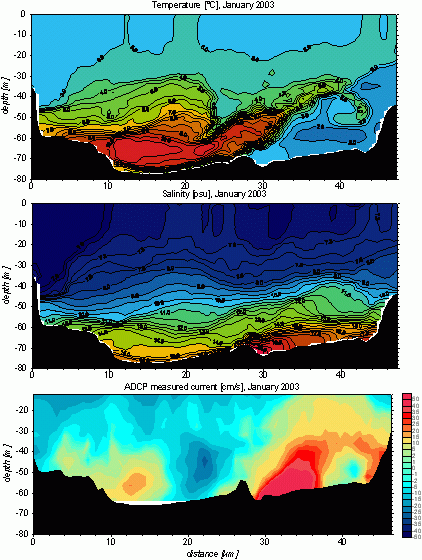
Fig 2. Dense bottom current entering into the Bornholm Basin. January 2003
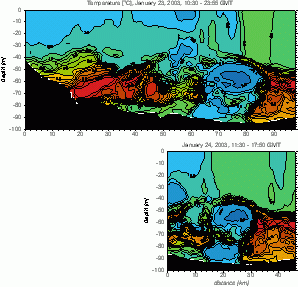
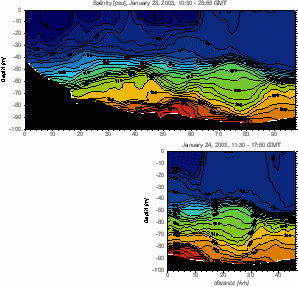
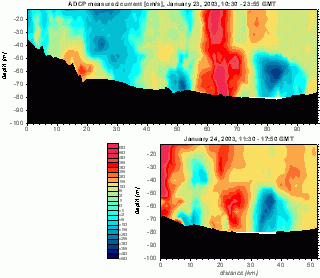
Fig 3. Eddies and meandering of slope current in the Bornholm Basin. January 2003
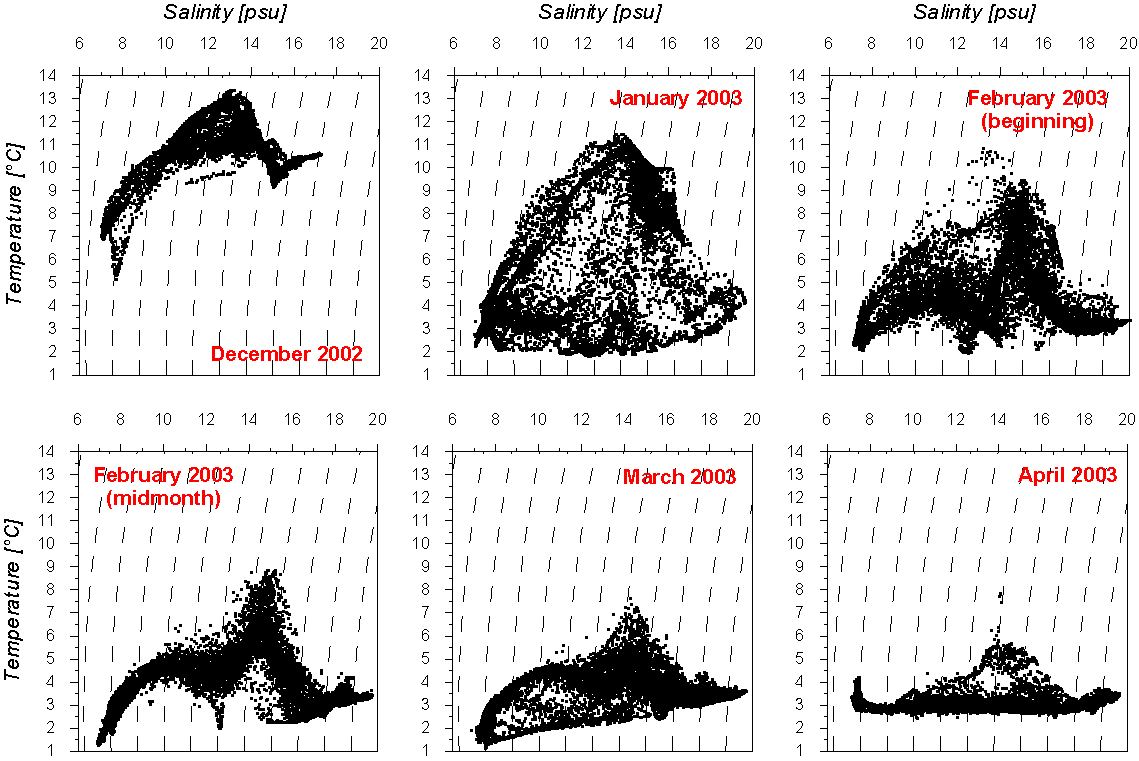
Fig 4. Transformation of water masses during succeeding stages of inflow in 2003 – Borbholm Basin
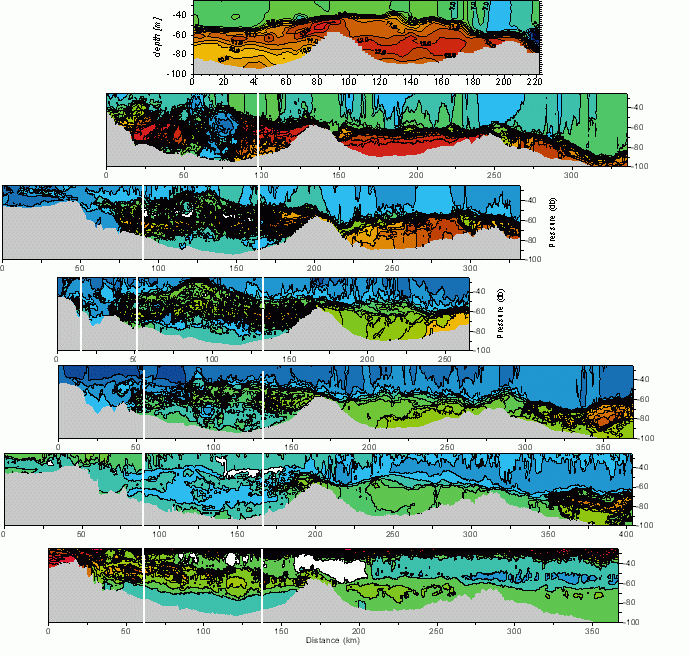
Fig 5. Temperature changes along the Main Transect. December 2002 – August 2003
(respectively for December 2002, January 2003, February 4-7, February 16-18, March, April and August)
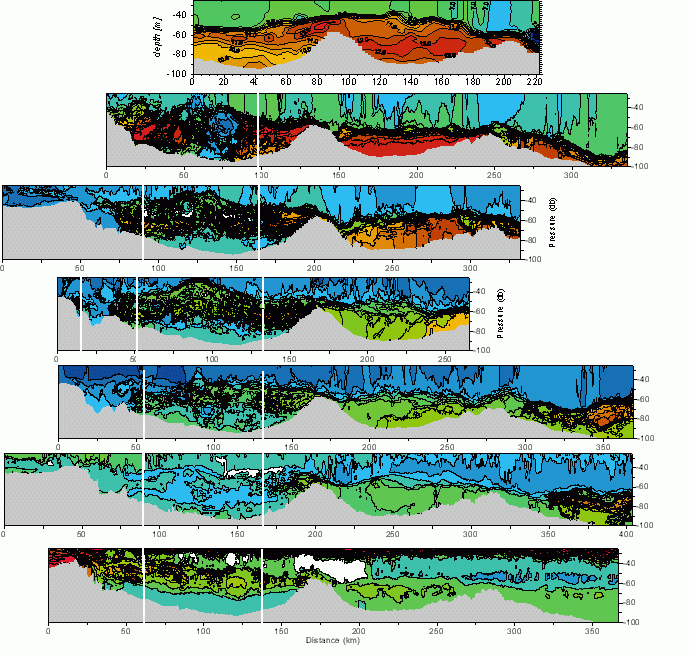
Fig 6. Salinity changes along the Main Transect. December 2002 – August 2003
(respectively for December 2002, January 2003, February 4-7, February 16-18, March, April and August)
- In January 2003 we have witnessed exceptionally interesting feature: the medium size inflow bringing about 200 km3 of highly saline, and exceptionally cold water into the deep layer of exceptionally warm waters.
- Inflow waters moved exceptionally fast into the Arkona
Basin and
through the Bornholm Gate into the Bornholm Basin: estimated speed
would be about 30 cm/s.
- Flow of inflow waters was disturbed by frequent baroclinic eddies, particularly numerous in the Bornholm Deep.
- Bornholm Basin was the main area of mixing of cold inflow
waters with the local warm waters
- To the east of Bornholm Basin no “pure” inflow waters were seen,
mixed waters only.
- Inflow pushed ambient waters upwards by 20-30m, thus the volume of the inflow grew considerably by entrainment and mixing.
- As a consequence of the inflow more saline and colder, mixed waters from the intermediate layers of the Bornholm Deep were flowing to the Słupsk Furrow over the Słupsk Sill
- Intensive heat exchange through the thermal conductivity was observed in spite of strong density stratification.
See here the complete presentation as a HTML slideshow, PDF file or Macromedia Flash animation.